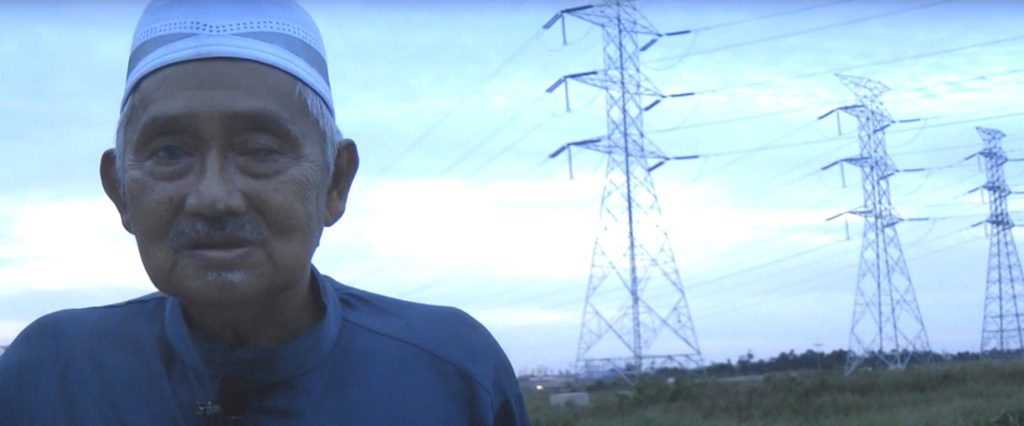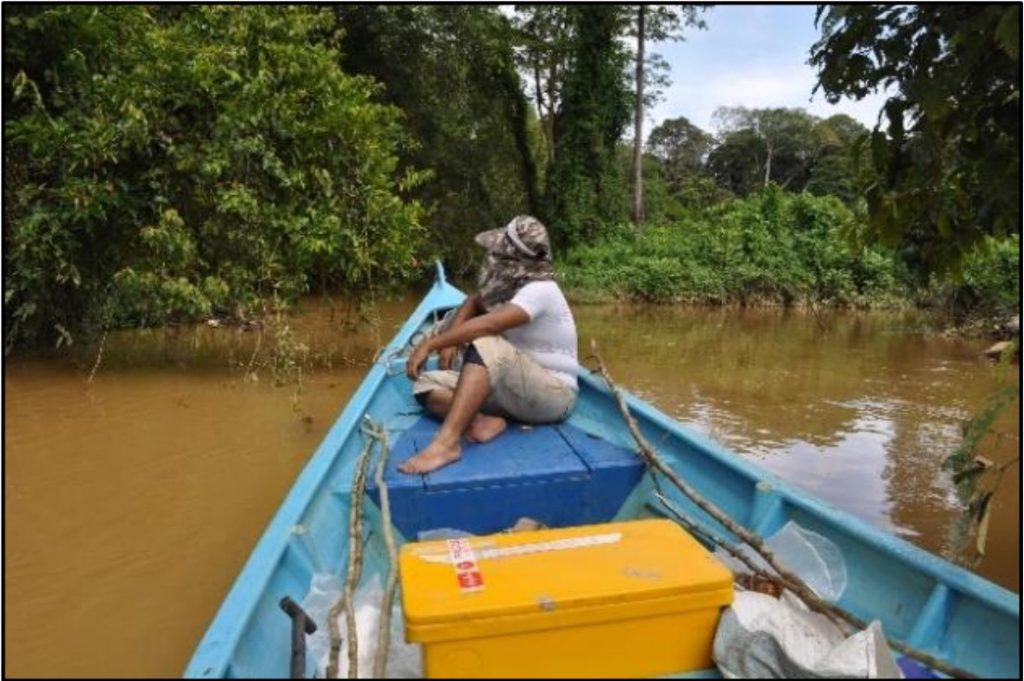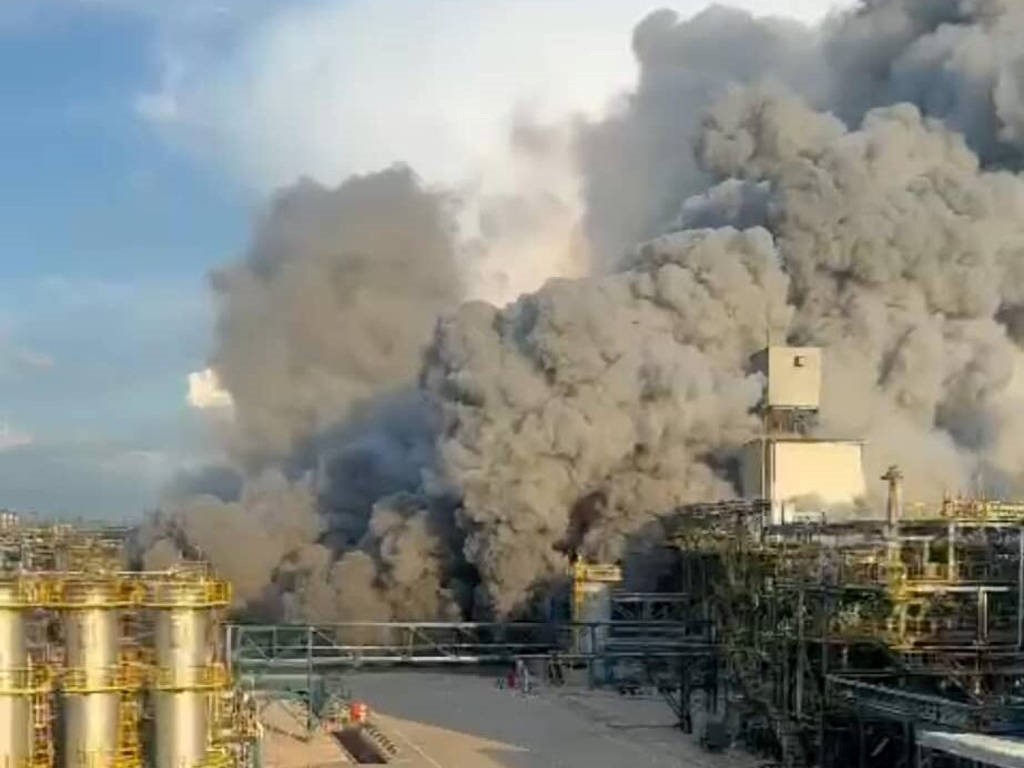The tropical rainforest on the island of Borneo is older than the Amazon. The sea off the coast of Malaysia is one of the most biodiverse in the world. In the Samalaju Industrial Park in East Malaysia, the South Korean company OCI produces large quantities of polycrystalline silicon (“polysilicon” for short), particularly for solar cells. The industrial park jeopardizes the livelihoods and health of indigenous smallholder farmers and fishermen. The production has also resulted in the deaths of several workers.
OCI Malaysia (OCI M), now renamed OCI TerraSus, a subsidiary of OCI, one of the world’s leading polysilicon manufacturers, has been producing on Borneo since 2017. Since the end of 2022, 35,000 tons of polysilicon have been produced there every year – enough to generate over 10 gigawatts of electricity. A large proportion of this goes to the Chinese company LONGi Green Technology, which covers a quarter of global demand for solar cells and modules and serves customers in the USA and the EU in particular.
Just a few kilometers from the industrial park are three villages along the Nyalau River: Kuala Nyalau, Tengang Nyalau and Ulu Nyalau. The inhabitants belong to the Kedayan ethnic group, one of Malaysia’s indigenous groups. They secure their food and income mainly through small-scale farming and fishing in sea and river waters.
Shortly after the first factories in the Samalaju Industrial Park (SIP) went into operation, Sabtu Bin Bunut, then head of the village of Ulu Nyalau, complained of frequent fevers and coughs. He never really recovered from them. A 2017 health study also found unusually high rates of respiratory and cardiovascular diseases. Farmer and fisherman Haji Lalih bin Takah, who had been living in Ulu Nyalau for 50 years at the time, noticed a sudden and sharp decline in his harvest. The cucumbers and peanuts looked different, so no one wanted to eat them anymore. He sent his children away to protect them from the air pollution. However, companies such as the aluminium smelter Press Metal Bintulu have continued to expand their production – since 2014, it has doubled its output to 760,000 tons per year.

Haji Lalih Bin Tahak from Ulu Nyalau reports on the pollution (© peoplesdocumentary)
Pollution threatens food resources
Pollution threatens food resources
The Kedayan have not only lost important fishing grounds due to the industrial park’s deep-sea port. Above all, the marine pollution caused by the wastewater from OCI M and the other factories threatens their food and income sources. According to an anonymous statement by a former employee, the management of waste and chemicals is inadequate. The hazardous waste from OCIM (alkaline sludge) should actually be transported to a secure landfill at the Integrated Waste Management Park 27 km south of Kuching. However, this is impossible due to clogged pipes, so it is ultimately discharged into the sea. The former employee explains the cause:
„[The management] push[es] the plant operation harder to produce more polycrystalline silicon and by pushing everything in the plant, they cause severe damage to the equipment and then, of course, we have leaking here and there, we have corrosion, and then we have the clogging and everything.”
Nevertheless, OCI TerraSus is planning further increases in production – to 56,600 tons per year by 2027. Two palm oil plantations above the villages also discharge their wastewater into the River Nyalau. According to an environmental impact assessment, a large fish kill occurred for the second time in 2018, presumably due to damage to the retention basin for the palm oil mill’s wastewater.

Fishermen on the river Nyalau (© Department of Environment)
The river will be further polluted if a planned Integrated Waste Management Park for the SIP (Samalaju Integrated Waste Management Park) is implemented – this would be exclusively for OCIM’s hazardous waste. The park would also be operated by a joint venture between the Sarawak government and the German company Trienekens GmbH. The treated leachate from the landfill is to be discharged around 30 kilometres upstream from the village of Ulu Nyalau – with negative effects on the fish fauna. Heavy metals could also enter the food cycle of the fish and thus the inhabitants. The inhabitants of the villages are faced with a dilemma: if they leave their land due to environmental pollution, their future is uncertain. This is because the state only recognizes customary rights for cultivated farmland. They would lose these rights. However, if they remain on site, they continue to be exposed to the “slow violence” through breathing, food, water and skin contact. Their health, traditional agriculture and fishing are gradually and irreversibly destroyed and their rights to life, health, water, food, a clean environment and their indigenous rights to culture, self-determination and land are violated.
Recommendations from the UN Special Rapporteur
The Malaysian state is partly responsible for the human rights violations as it promotes the industrial park and exposes the already marginalized Kedayan to high levels of toxic pollution. Instead, Malaysia should ratify and implement ILO Convention 169 on the Protection of Indigenous Peoples. Companies such as OCI M should be required to fulfill their environmental and human rights due diligence obligations, including the disclosure of social and environmental impacts. This would make it easier for those affected to hold companies accountable in court.
According to Marcos Orellana, UN Special Rapporteur on Toxics and Human Rights, decarbonization of energy production should not be the only goal at a global level. It must also go hand in hand with a reduction in the toxic burden on vulnerable groups such as indigenous peoples. The production of solar cells should therefore not lead to “sacrifice zones”. OCI M and other companies should be obliged to produce and use non-hazardous substitutes throughout the entire life cycle and respect human rights principles such as prevention, transparency, the precautionary principle, non-discrimination and the polluter pays principle. Climate protection technologies that are harmless to people and the environment must be developed worldwide. A reduction in energy consumption, particularly in the Global North, would also help to avoid toxic pollution for communities such as the villages on the Nyalau River.
Working under danger to life
Polysilicon production also poses health and life hazards for workers, particularly due to the use of hydrogen. External contract workers who are used for maintenance work are particularly at risk. Leaks in the plants exacerbate the dangers. Chemical burns, fires and explosions have repeatedly occurred at OCI M. On May 9, 2022, for example, two external workers died when a tank exploded and two others were injured. The cause has not yet been clarified. The name of the company was kept secret in the media (the name OCI M was only briefly mentioned on a Malay-language website).
On August 14, 2024, a leak in a pipeline caused another explosion, including one involving hydrogen, which again killed two people and injured eight (see also this video).

Clouds of smoke after the explosion that killed two people on August 14
The Malaysian Minister for Tourism, Arts and Culture, Tion King Sing, warned that disaster prevention was inadequate and warned: “The factory must operate conscientiously, review and enhance its risk management mechanisms, and ensure that such incidents do not happen again.” However, according to a former employee, the company appears to be willing to accept the loss of human life for the sake of profit:
“These Korean[s] in the top management put money as number one. They don’t care about safety. They just keep everything as long as it keeps producing money. So, when we [the security personnel] say ‘We have to stop work because it’s dizzying, dangerous’, they call us, ‘Come back here, don’t bother them’”.
In its annual reports, OCI remains completely silent about fatalities, accidents and environmental impacts at OCI M.
In addition to the company, however, the Malaysian government must also fulfill its responsibility and ratify and implement the ILO conventions on occupational health and safety in addition to introducing reporting obligations.
Further information on the cause of the accident on August 14, 2024, including a report, can be found here.
The accident on May 9, 2022 in the media:
Dayakdaily (10.05.2022): “2 killed, 2 injured in chemical plant explosion in Bintulu’s Samalaju Industrial Park”
SarawakTribune (10.05.2022): “Two killed in chemical plant blast”
freemalaysiatoday (10. 05.2022): “2 maut, 2 cedera dalam kemalangan kilang di Bintulu”
NewStraitsTimes ((10.05.2024): “No pollution from Samalaju chemical plant blast in 2022, ministers tells state assembly”
A current commentary by Bernreuter Research on the assessment of the incidents and OCI’s corporate irresponsibility can be found here.
Von Nina Uretschläger
The German version of this article can be read here.
This article partially summarizes the author’s Master’s thesis which can be read here.
Update: OCI M has changed its name to OCI TerraSus.


